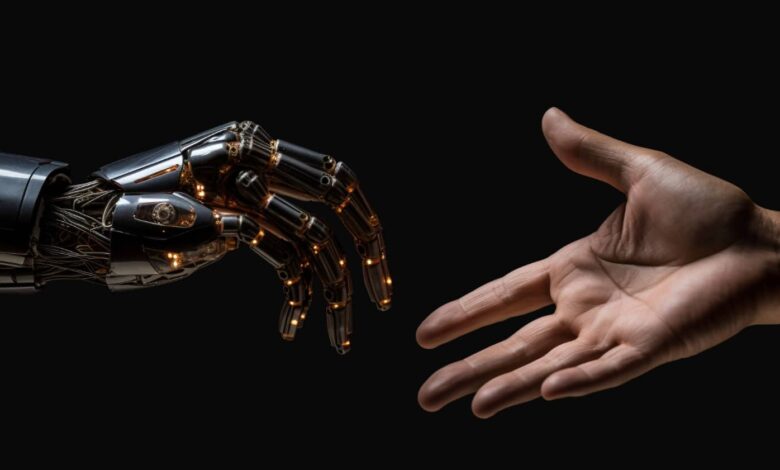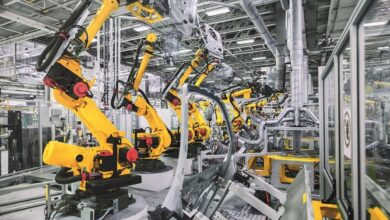New robotic hand can feel touch as fast as a blindfolded human

Researchers from Uppsala University and Karolinska Institutet in Sweden have developed a groundbreaking “feeling” robotic hand that can effectively sense touch similar to humans. This development has the potential to usher in a new era of tactile prosthetics and robotics. The technology could also be used to help restore lost functionality to patients after a stroke.
The innovative robotic hand was a result of the collaboration between researchers at Uppsala University’s Signals and Systems Division, who provided expertise in data processing and machine learning, as well as a group of researchers from the Department of Neurobiology, Care Sciences and Society, Division of Neurogeriatrics at Karolinska Institutet.
“Our system can determine what type of object it encounters as fast as a blindfolded person, just by feeling it and deciding whether it is a tennis ball or an apple, for example,” says Zhibin Zhang, docent at the Department of Electrical Engineering at Uppsala University.
Harnessing insights from neuroscience, a cutting-edge artificial tactile system has been developed to replicate the human nervous system’s response to touch. This innovative system utilizes electrical pulses to process dynamic tactile information in a manner that closely mirrors the human nervous system.
“With this technology, a prosthetic hand would feel like part of the wearer’s body,” Zhang explains.
The artificial tactile system, which takes inspiration from the human nervous system, can process tactile information in real time, mimicking human responses to touch. It consists of three main components: an electronic skin (e-skin) with sensors that can detect pressure by touch, a set of artificial neurons that convert analog touch signals into electrical pulses, and a processor that processes the signals and identifies the object.
The artificial system demonstrates the ability to learn and identify a diverse range of objects. In trials, researchers have successfully tested it with 22 different objects for grasping and 16 different surfaces for touching.
“We’re also looking into developing the system so it can feel pain and heat as well. It should also be able to feel what material the hand is touching, for example, whether it is wood or metal,” says Assistant Professor Libo Chen, who led the study.
Researchers have made groundbreaking strides in improving interactions between humans and robots or prosthetic hands through tactile feedback. This innovation not only enhances safety but also facilitates natural and seamless interactions.
By equipping prostheses with capabilities to handle objects with the dexterity of a human hand, this technology has the potential to revolutionize various fields.
“The skin contains millions of receptors. Current e-skin technology cannot deliver enough receptors, but this technology makes it possible, so we would like to produce artificial skin for a whole robot,” says Chen.
The technology could also be used medically to monitor movement dysfunctions associated with conditions such as Parkinson’s disease and Alzheimer’s disease. Moreover, it offers promise in aiding patients’ recovery of lost functionality after suffering from a stroke.
Moreover, Zhang highlights the potential for the technology to detect and prevent falls in patients, “The technology can be further developed to tell if a patient is about to fall. This information can be then used to either stimulate a muscle externally to prevent the fall or prompt an assistive device to take over and prevent it.”
This groundbreaking research has received substantial funding from prestigious sources such as the European Horizon 2020 Research and Innovation Programme, the Swedish Research Council, the Swedish Foundation for Strategic Research, the eSSENCE Research Programme (Sweden), and other esteemed organizations.
Journal reference:
- Libo Chen, Sanja Karilanova, Soumi Chaki, Chenyu Wen, Lisha Wang, Bengt Winblad, Shi-Li Zhang, Ayça Özçelikkale, Zhi-Bin Zhang. Spike timing–based coding in neuromimetic tactile system enables dynamic object classification. Science, 2024; DOI: 10.1126/science.adf3708



